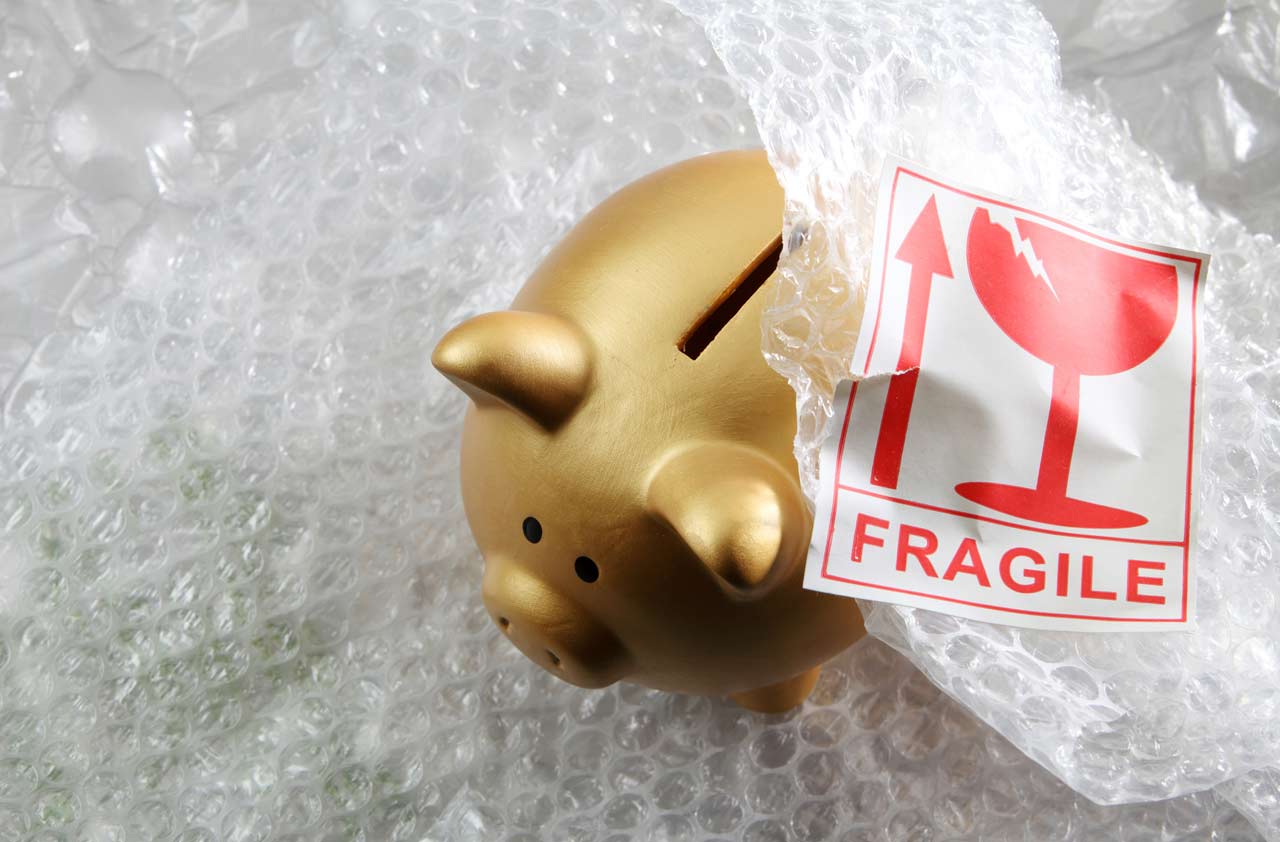Avoid These Mistakes with Your Retirement Income Plan
Because we are living longer, retirees need to find sustainable sources of retirement income. Make sure you're avoiding the following mistakes when planning for retirement income.


Retirees can no longer rely on outdated rules to generate sufficient retirement income. According to the American Academy of Actuaries, a couple who both attain age 65 will have a 50% chance of having one spouse living into their 90s. That means retirees are living longer, and finding a sustainable source of retirement income is now more crucial than ever.
Adding to that challenge is the fact that financial advisers can manipulate retirees into making bad decisions that, in a matter of years, can deplete what took decades to build.
Here are the mistakes that you should avoid with your retirement income plan at all costs:
From just $107.88 $24.99 for Kiplinger Personal Finance
Become a smarter, better informed investor. Subscribe from just $107.88 $24.99, plus get up to 4 Special Issues

Sign up for Kiplinger’s Free Newsletters
Profit and prosper with the best of expert advice on investing, taxes, retirement, personal finance and more - straight to your e-mail.
Profit and prosper with the best of expert advice - straight to your e-mail.
High fees in costly financial products
One of the most careless mistakes retirees make is neglecting to thoroughly read and vet financial products to ensure they will not lose significant amounts in hidden fees. There are some unscrupulous financial advisers out there who lure unsuspecting clients in with promises of higher or guaranteed returns — or bonuses — which typically take years to obtain (a detail they may “forget” to highlight), and in return, retirees roll their money into costly investments. (Learn more by reading What to Know Before Purchasing an Annuity Income Rider.)
For example, some financial advisers like to suggest variable annuities for IRA rollover dollars or pension funds (which they will probably suggest you take out in a lump sum before investing). These insurance products let the investor pay into mutual fund sub-accounts, letting returns grow tax-deferred until withdrawal. Often, these advisers don't emphasize the high fees associated with variable annuities, which are normally 2% to 3% or more of your assets to cover the costs of investment management. In addition, these advisers may sell retirees on products with unnecessary guarantees, such as annuity income riders, that they might not need.
What's more, financial advisers might suggest cashing in one annuity and buying into another. While these turnovers can bring advisers 5% or more in commissions (with fixed indexed annuities it can be as high as 9%), that may mean penalty costs for the investor. These penalty costs come from the surrender charges associated with cashing out an annuity within the contract period — as low as three years but as high as 15 years. These penalties and fees can significantly erode a retiree’s retirement savings.
Using outdated rules for withdrawing money
Many people are familiar with the “4% Rule” — the supposed “safe” withdrawal rate retirees were told to use so that they would never run out of money. The problem with the rule is that it was developed during the mid-1990s, when bond interest rates and stock market returns were historically higher. Since then, bond interest rates have been much lower, and there have been some major fluctuations in the market since the turn of the century.
Depending on a retiree’s sequence of returns risk — a term used to analyze investment returns when paired with risk and periodic withdrawals — a retiree could end up more than 57% likely to run out of money utilizing the 4% rule, according to the American Institute for Economic Research. The first five years of retirement are the riskiest, which means that poor investment returns can put your retirement plan in danger.
The 4% Rule could work if a retiree were wealthy or young enough to withstand the volatility of market fluctuations. But for the average retiree (who is now also living longer, historically, than previous retirees), time may not be on your side.
Instead, using an adjusted percentage of 3% or less will improve your success rate. Of course, you can always save more, too. Also, keeping better tabs on your expenses helps — versus a “set-it-and-forget-it” mentality.
Exposing investments to too much risk
How much is “too much risk”? Financial advisers typically use Monte Carlo simulation — a probability of different outcomes to understand how risk will affect the bottom line of any portfolio. The problem is advisers can manipulate the number of scenarios in order to project more favorable results. A good Monte Carlo analysis should simulate at least 10,000 scenarios to be accurate. However, many financial advisers might only show 1,000 or even less!
Retirees often expose themselves to too much risk, and that could put their portfolio in danger of not lasting the 30 years or more years they likely will need. Sometimes it’s overexposure to a risker stock percentage. In other scenarios, it’s being invested too much in bonds that don’t allow other investments the appropriate time to appreciate.
For example, I ran two separate Monte Carlo simulations with 1,000 scenarios each. The portfolio of 40% stocks and 60% bonds had a 49% success rate when withdrawing 4% per year, with 490 simulations lasting for 30 years and 510 running out of money. The portfolio of 60% stocks and 40% bonds had a 53% success rate, with 528 simulations lasting 30 years and 472 running out of money.
Bond rates and timing are often the main issue retirees run into, as detailed in A Blueprint for Retirement Spending by the American Institute for Economic Research, which reaffirmed a Morningstar study Low Bond Yields and Safe Portfolio Withdrawal Rates.
In order to mitigate potential risk in your investments, consider using fixed or fixed-indexed annuities to protect a portion of your principal. The right types of annuities are an alternate solution to other safe investments — including CDs, money markets, savings accounts and Treasury bills. Be sure to stay away from variable annuities, as they will immediately expose your principal to risk. (Learn more by reading Are Annuities a Solution for Baby Boomers in Retirement?)
Overpaying or not planning for taxes
Retirees should be aware of how taxes can impact and drastically reduce their retirement savings. For example, a retired couple receiving Social Security and a small pension could be in a low enough income tax bracket that they potentially could withdraw a portion of their IRA earnings or tap their taxable accounts and possibly have no (or very minimal) overall taxation. Most of this is due to how Social Security income is taxed.
In 2019, if you’re single and your combined income was $25,000-$34,000, you’ll pay taxes on up to 50% of your Social Security benefit. If your combined income was more than $34,000, you’ll pay taxes on up to 85% of your Social Security benefit.
If you’re married filing jointly and your combined income was $32,000-$44,000, you’ll pay taxes on up to 50% of your Social Security benefits. If your combined income was more than $44,000, you’ll pay taxes on up to 85% of your Social Security benefits.
Now might be the time to act if you've been looking for a chance to convert your fully taxed traditional IRA to a Roth potentially tax-free! Taxes are on sale, and the consequences might be minimal versus years ago, but probably more favorable than in the future, especially if tax rates increase. Keep in mind that Roth conversions can no longer be recharacterized — or undone — so make sure it’s the correct move. (Learn more by reading What Are the Income Tax Brackets for 2019 vs. 2018?)
Attempting a 60-day IRA rollover
The biggest mistake retirees can make when it comes to their IRAs is cashing them out completely. Based on advice from their financial advisers, retirees may choose this, but it is not recommended. Not only can this generate severe penalties — such as an early distribution penalty of 10% if you’re under the age of 59½ — but you’ll also need to pay income taxes, and depending on your tax bracket, it can be a hefty sum. Instead, with careful preparation, there is a process to roll over the funds tax-free.
The "once-per-year" (or once every 365 days) rollover that retirees can use means they can take possession of the funds in their personal account and make sure they are redeposited in an IRA within 60 days. If you do not complete the move within 60 days, you’ll be subject to the same penalties as if it was cashed out (e.g., 10% penalty and income taxes).
Instead of risking a problem with a 60-day rollover, use a direct transfer, where the funds are sent directly to the new custodian (also known as a “direct trustee-to-trustee transfer”). It’s important to note that you can use the direct trustee-to-trustee transfer an unlimited amount of times in comparison to the 60-day rollover.
Retirement can be filled with different traps and land mines, but you don’t have to end up in a disastrous situation as long as you’re aware of what’s ahead.
Profit and prosper with the best of Kiplinger's advice on investing, taxes, retirement, personal finance and much more. Delivered daily. Enter your email in the box and click Sign Me Up.

Carlos Dias Jr. is a financial adviser, public speaker and president of Dias Wealth, LLC, headquartered in the Orlando, Fla., area, but working with clients nationwide. His expertise spans a diverse clientele, including business owners, retirees, lottery winners and professional athletes with wealth management, tax planning, estate planning, long-term care, annuities and life insurance. Carlos has contributed to Kiplinger, Forbes and MarketWatch, and his work has been featured in CNN, CNBC, The Wall Street Journal, U.S. News & World Report, USA Today and other publications. He’s spoken at various CPA societies across the United States, and Carlos’ presentations often focus on innovative tax strategies, retirement planning and asset protection, providing valuable knowledge to accountants, attorneys and financial professionals.
-
 Nasdaq Sinks 418 Points as Tech Chills: Stock Market Today
Nasdaq Sinks 418 Points as Tech Chills: Stock Market TodayInvestors, traders and speculators are growing cooler to the AI revolution as winter approaches.
-
 23 Last-Minute Gifts That Still Arrive Before Christmas
23 Last-Minute Gifts That Still Arrive Before ChristmasScrambling to cross those last few names off your list? Here are 23 last-minute gifts that you can still get in time for Christmas.
-
 The Rule of Compounding: Why Time Is an Investor's Best Friend
The Rule of Compounding: Why Time Is an Investor's Best FriendDescribed as both a "miracle" and a "wonder," compound interest is simply a function of time.
-
 If You're a U.S. Retiree Living in Portugal, Your Tax Plan Needs a Post-NHR Strategy ASAP
If You're a U.S. Retiree Living in Portugal, Your Tax Plan Needs a Post-NHR Strategy ASAPWhen your 10-year Non-Habitual Resident tax break ends, you could see your tax rate soar. Take steps to plan for this change well before the NHR window closes.
-
 Could Target-Date Funds With Built-In Income Guarantees Be the Next Evolution in Retirement Planning?
Could Target-Date Funds With Built-In Income Guarantees Be the Next Evolution in Retirement Planning?With target-date funds falling short on income certainty, retirement plans should integrate guaranteed income solutions. Here is what participants can do.
-
 Your Year-End Tax and Estate Planning Review Just Got Urgent
Your Year-End Tax and Estate Planning Review Just Got UrgentChanging tax rules and falling interest rates mean financial planning is more important than ever as 2025 ends. There's still time to make these five key moves.
-
 What Makes This Business So Successful? We Find Out From the Founder's Kids
What Makes This Business So Successful? We Find Out From the Founder's KidsThe children of Morgan Clayton share how their father's wisdom, life experience and caring nature have turned their family business into a respected powerhouse.
-
 Past Performance Is Not Indicative of Your Financial Adviser's Expertise
Past Performance Is Not Indicative of Your Financial Adviser's ExpertiseMany people find a financial adviser by searching online or asking for referrals from friends or family. This can actually end up costing you big-time.
-
 I'm a Financial Planner: If You're Not Doing Roth Conversions, You Need to Read This
I'm a Financial Planner: If You're Not Doing Roth Conversions, You Need to Read ThisRoth conversions and other Roth strategies can be complex, but don't dismiss these tax planning tools outright. They could really work for you and your heirs.
-
 Could Traditional Retirement Expectations Be Killing Us? A Retirement Psychologist Makes the Case
Could Traditional Retirement Expectations Be Killing Us? A Retirement Psychologist Makes the CaseA retirement psychologist makes the case: A fulfilling retirement begins with a blueprint for living, rather than simply the accumulation of a large nest egg.
-
 I'm a Financial Adviser: This Is How You Can Adapt to Social Security Uncertainty
I'm a Financial Adviser: This Is How You Can Adapt to Social Security UncertaintyRather than letting the unknowns make you anxious, focus on building a flexible income strategy that can adapt to possible future Social Security changes.